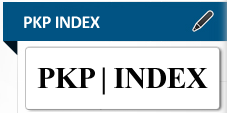Analisis penyebaran Particulate Matter 10 (PM10) pascaerupsi Gunung Kelud 13 Februari 2014
Abstract
ABSTRAK
Erupsi Gunung Kelud terjadi pada 13 Februari 2014 diawali oleh letusan freatomagmatik awal yang diikuti oleh erupsi magmatik yang menghasilkan aliran piroklastik dan jatuhan piroklastik. Penelitian dan pengamatan kualitas udara di sekitar Gunung Kelud mutlak dilakukan untuk mengetahui dampaknya bagi lingkungan dan manusia. Oleh karena itu, pengamatan Particulate Matter 10 (PM10) dan parameter meteorologi telah dilakukan pada kecamatan terdampak erupsi di sekitar Gunung Kelud. Pengamatan berlangsung 16 - 21 Februari 2014 di Kecamatan Kepung, Wates, dan Nglegok. Selama observasi, tiap kecamatan memiliki kategori tersendiri untuk tiap hari. Kategori dibagi berdasarkan Indeks Standar Pencemaran Udara Nasional (ISPU) dengan nilai ambang batas 150 μ/m3. Kecamatan Kepung memiliki dua kategori sedang (96,87 - 98, 49 μ/m3) dan empat tidak sehat (123,61 - 181,93 μ/m3). Kecamatan Wates memiliki dua kategori bahaya (> 300 μ/m3) , satu tidak sehat (146,70 μ/m3) dan sedang (89,77 μ/m3). Kecamatan Nglegok memiliki tiga kategori sedang (56,16 - 77,99 μ/m3), dua baik (43,66 - 46,41 μ/m3) dan satu tidak sehat (117,07 μ/m3). Perbedaan konsentrasi PM10 akibat perbedaan dominasi arah dan kecepatan angin dari Gunung kelud.
Kata kunci: erupsi Gunung Kelud, indeks standar pencemaran udara nasional, ISPU, particulate matter
10 (PM10)
ABSTRACT
The eruption of Kelud Volcano in February 2014 was characterized by initial phreatomagmatic eruptions followed by magmatic erupstion which produced pyroclastic flows, and pyroclastic falls. Research and observation of air quality around Kelud Volcano must be conducted to determine the impact on the environment and humans. Therefore, observation of Particulate Matter 10 (PM10) and meteorological parameters has been carried out in three subdistricts affected by the eruption of Kelud Volcano. The observations took place 16 - 21 February 2014 in the subdistrict of Kepung, Wates, and Nglegok. During the observation, each subdistrict has its own category for every day. The Categories are divided according to the National Air Pollution Standards Index (ISPU) with a threshold value of 150 μ/m3. Subdistrict Kepung has two moderates (96.87 - 98.49 μ/m3) and four unhealthly kategory (123.61 - 181.93 μ/m3). District Wates has two hazardous (> 300 μ/m3) ,one unhealtly (146.70 μ/m3) and moderate (89.77 μ/m3) category. District Nglegok has three moderate (56.16 - 77.99 μ/m3), two good (43.66 - 46.41 μ/m3) and one unhealtly (117.07 μ/m3) category. The PM10 concentration differences due to differences in the dominance of wind direction and speed from Kelud Volcano.
Keyword: Eruption of Kelud Volcano, ISPU, National Air Pollution Standards Index, Particulate Matter 10 (PM10)
Full Text:
PDFDOI: http://dx.doi.org/10.34126/jlbg.v5i1.64
Refbacks
- There are currently no refbacks.

This work is licensed under a Creative Commons Attribution-NonCommercial 4.0 International License.









